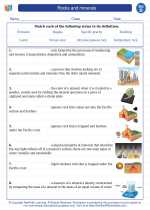Rocks and minerals -> magnetic
Magnetic
When we talk about something being "magnetic," we're usually referring to its ability to attract certain materials, such as iron or steel. This property is due to the presence of a magnetic field, which is a region around a magnet where its influence can be felt. Magnets have two poles, known as the north pole and the south pole. Like poles repel each other, while opposite poles attract each other.
What is Magnetism?
Magnetism is a force that can either attract or repel objects. It is caused by the motion of electric charge. At an atomic level, electrons in the material are moving around the nucleus, creating a tiny magnetic field. In materials like iron, these tiny magnetic fields line up in the same direction, creating a larger magnetic field that is noticeable to us.
Types of Magnets
There are several types of magnets, including:
- Permanent Magnets: These are materials that are magnetized and retain their magnetic properties. Common examples include bar magnets, horseshoe magnets, and refrigerator magnets.
- Temporary Magnets: Materials that become magnetic when exposed to a magnetic field, but lose their magnetism when the field is removed. Examples include iron and steel.
- Electromagnets: These are magnets created by passing an electric current through a coil of wire. The strength of the magnetic field can be increased or decreased by changing the amount of current flowing through the wire.
Uses of Magnets
Magnets have a wide range of practical applications, including:
- Electric motors and generators
- Magnetic resonance imaging (MRI) machines in medicine
- Speakers and headphones in audio equipment
- Magnetic compasses for navigation
- Magnetic storage in hard drives and credit cards
Study Guide
- What are the two poles of a magnet called? Answer: The north pole and the south pole.
- What causes magnetism at an atomic level? Answer: The motion of electric charge, specifically the movement of electrons around the nucleus of an atom.
- Give an example of a permanent magnet. Answer: A bar magnet.
- What is an electromagnet and how is it different from a permanent magnet? Answer: An electromagnet is created by passing an electric current through a coil of wire. Its magnetism can be turned on and off by controlling the flow of electric current, unlike permanent magnets.
- Name one practical application of magnets. Answer: Electric motors and generators.
◂Science Worksheets and Study Guides Fourth Grade. Rocks and minerals
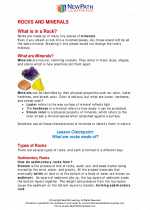
 Activity Lesson
Activity Lesson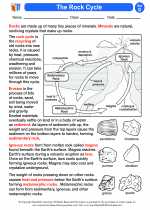
 Worksheet/Answer key
Worksheet/Answer key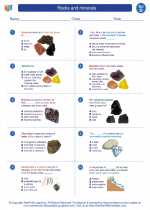
 Worksheet/Answer key
Worksheet/Answer key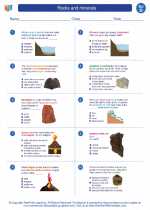
 Worksheet/Answer key
Worksheet/Answer key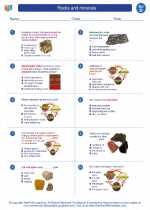
 Worksheet/Answer key
Worksheet/Answer key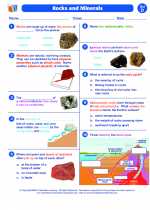
 Vocabulary/Answer key
Vocabulary/Answer key
 Vocabulary/Answer key
Vocabulary/Answer key
 Vocabulary/Answer key
Vocabulary/Answer key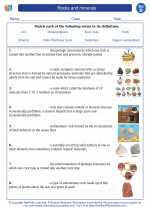
 Vocabulary/Answer key
Vocabulary/Answer key